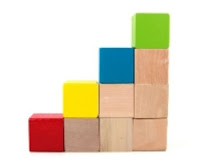Girls Who Code: The Friendship Code by Stacia Deutsch, 144 pp, RL 4
 As I said in my review of Girls Who Code: Learn to Code and Change the World by Reshma Saujani, founder of girls who code, it rankles me when I see things marketed specifically to girls. But, after reading Saujani's intro to her book and doing a little research into the disparity between the growing number of jobs and low numbers of women working in the field of computer science, I am ALL IN! As Saujani says in her introduction to The Friendship Code, "I realized that there was a need for books that described what it's like to actually be a girl who codes. I always say, 'You can't be what you can't see.' And that's true for books, too! We need to read stories about girls who look like us in order to be inspired to try something new." As you can see by the cover illustration by Andrea Fernandez, the characters in The Friendship Code are diverse - both in cultures and interests. And, I am happy to report that both the fiction and non-fiction books in the new Girls Who Code series are fantastic!
As I said in my review of Girls Who Code: Learn to Code and Change the World by Reshma Saujani, founder of girls who code, it rankles me when I see things marketed specifically to girls. But, after reading Saujani's intro to her book and doing a little research into the disparity between the growing number of jobs and low numbers of women working in the field of computer science, I am ALL IN! As Saujani says in her introduction to The Friendship Code, "I realized that there was a need for books that described what it's like to actually be a girl who codes. I always say, 'You can't be what you can't see.' And that's true for books, too! We need to read stories about girls who look like us in order to be inspired to try something new." As you can see by the cover illustration by Andrea Fernandez, the characters in The Friendship Code are diverse - both in cultures and interests. And, I am happy to report that both the fiction and non-fiction books in the new Girls Who Code series are fantastic!
So, here is my experience with coding. Back in 2008 when I started this blog, I knew that I wanted to create links in my reviews, links that would open up in a new window. I learned how to write the one line of code to make that happen. And, despite the fact that I have purchased several books (for kids) on learning to code and had 30 laptops in my library with kids coding during Hour of Code week for the last three years, I haven't really advanced my knowledge of coding that much in the last nine years. But I want to. And this is going to be my year to do it and I'm going to drag my students along with me!
Girls Who Code: The Friendship Code by Stacia Deutsch hooked me from the start as sixth-grader Lucy waited excitedly for the bell to ring so she could run to the first meeting of after school coding club. What impressed me most about The Friendship Code was the way that coding was integrated seamlessly into all aspects of the plot. Hopefully, this will inform readers who know little or nothing about coding the many ways it is part of all of our lives. Lucy has an uncle who undergoing treatment for cancer and she wants to create an app that will help him manage his many medications and she is anxious to get started. Her high spirits plummet when she realizes that Mrs. Clark's first lesson in coding club doesn't even use computers!
After writing out instructions for making a peanut butter and jelly sandwich, Lucy begins to understand the importance of writing precise instructions, or computer instruction logic. Because, when writing code, GIGO: garbage in, garbage out. As Lucy and new girl Erin work to understand the secret coding messages being left for her, and to find out who is leaving them, they build friendships and learn a little bit about coding. In fact, the friends even create a coding game that helps them to uncover the person behind the coding mystery. In the The Friendship Code, Deutsch has done a marvelous job integrating the computer science with a story about the kind of social issues that usually make up the bulk of the plot in a book for girls. The computer and coding plot threads serve the social aspects story, moving it forward, rather than the plot being built around computer science and coding, insuring a wide range of appeal for young (girl) readers.
Source: Review Copy



